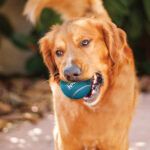
Caring for a paraplegic dog can be both challenging and rewarding. It involves ensuring your pet’s physical, emotional, and psychological well-being while navigating the daily tasks that come with their special needs. This guide will provide you with the knowledge and tools you need to give your paraplegic dog the best possible care.
Understanding Paraplegia in Dogs
Paraplegia in dogs is a condition where the dog loses the use of its hind legs due to spinal cord injury or disease. The dog’s front legs typically remain functional, but the back legs are paralyzed. Common causes of paraplegia in dogs include spinal injuries, intervertebral disc disease (IVDD), and degenerative myelopathy.
Key Challenges in Caring for a Paraplegic Dog
1. Providing Mobility and Daily Support
Mobility is one of the biggest challenges when caring for a paraplegic dog. Ensuring your dog can move around comfortably and safely is crucial for their physical health and happiness.
Solutions:
- Wheelchairs: A custom-fitted dog wheelchair can provide your pet with the mobility they need. Wheelchairs support the hind legs and allow the dog to walk using their front legs.
- Sling Harnesses: These can be used to help your dog move around the house or go up and down stairs. They provide support to the hindquarters and enable you to lift your dog without straining your back.
2. Managing Hygiene and Preventing Urinary Tract Infections
Paraplegic dogs often have difficulties with bladder control, which can lead to hygiene issues and urinary tract infections (UTIs).
Solutions:
- Bladder Expression: This involves manually expressing your dog’s bladder to ensure it empties completely. Regular bladder expression reduces the risk of UTIs.
- Dog Diapers: Use dog diapers to manage incontinence and keep your dog clean and dry. Change the diapers frequently to prevent skin irritation and infections.
- Cleaning Supplies: Keep a stock of cleaning supplies, such as pet-safe wipes, disinfectants, and bedding protectors, to maintain hygiene.
3. Addressing Emotional and Psychological Needs
Paraplegic dogs can experience stress and anxiety due to their limited mobility and changes in lifestyle. Ensuring their emotional well-being is just as important as their physical health.
Solutions:
- Mental Stimulation: Provide toys and activities that stimulate your dog’s mind. Puzzle toys, treat-dispensing toys, and interactive games can keep their minds engaged.
- Positive Reinforcement: Use positive reinforcement to encourage and reward your dog’s efforts. Praise, treats, and affection can boost their confidence and happiness.
- Social Interaction: Ensure your dog continues to have social interactions with other dogs and people. This can help reduce feelings of isolation and boredom.
4. Adjusting Living Spaces for Safety and Accessibility
Creating a safe and accessible environment for your paraplegic dog is essential. This reduces the risk of accidents and makes daily activities more manageable.
Solutions:
- Non-Slip Surfaces: Use non-slip mats or rugs to prevent your dog from slipping on smooth floors.
- Accessible Sleeping Areas: Provide a comfortable and accessible sleeping area. Consider using a low, orthopedic dog bed that supports their joints and makes it easier for them to get in and out.
- Safe Play Areas: Designate safe play areas where your dog can move around without obstacles. Remove any sharp objects or hazards that could cause injury.
5. Balancing Physical Activity and Preventing Overexertion
While physical activity is important for maintaining muscle tone and overall health, it’s crucial to balance this with rest to prevent overexertion.
Solutions:
- Scheduled Exercise: Plan regular exercise sessions that include walks or time in a wheelchair. Monitor your dog’s energy levels and adjust the duration and intensity of the exercise accordingly.
- Rest Periods: Ensure your dog has ample time to rest between activities. Overexertion can lead to fatigue and potential injuries.
- Physical Therapy: Consult with a veterinarian or a canine physical therapist for tailored exercise programs that suit your dog’s specific needs.
Daily Routine for a Paraplegic Dog
Establishing a consistent daily routine can help manage your dog’s needs effectively and ensure they receive the care they require.
Morning Routine
- Bladder Expression and Cleanup: Start the day by expressing your dog’s bladder and cleaning them up if necessary.
- Breakfast: Provide a nutritious meal that caters to their dietary needs. Ensure they have fresh water available at all times.
Mid-Morning Routine
- Exercise: Allow your dog some time in their wheelchair for a walk or play session. This helps maintain their muscle tone and provides mental stimulation.
- Bladder Check: Perform a quick bladder check and express if needed.
Afternoon Routine
- Rest and Relaxation: Provide a comfortable spot for your dog to rest and relax.
- Mental Stimulation: Engage them with interactive toys or playtime to keep their minds active.
Evening Routine
- Dinner: Feed your dog their evening meal and ensure they stay hydrated.
- Bladder Check and Expression: Perform another bladder check and express if necessary.
- Special Activities: Spend some quality time with your dog, engaging in activities they enjoy, such as gentle grooming or cuddling.
Night Routine
- Final Bladder Check: Express your dog’s bladder one last time before bed.
- Settle Down for the Night: Ensure they have a clean, comfortable, and accessible sleeping area.
Recommended Equipment and Tools
Having the right equipment can make a significant difference in managing your paraplegic dog’s needs.
1. Wheelchair
A custom-fitted dog wheelchair provides mobility and allows your dog to enjoy walks and playtime.
2. Dog Diapers
Dog diapers manage incontinence and keep your dog clean and dry. Choose diapers that are comfortable and easy to change.
3. Sling Harness
A sling harness provides support for your dog’s hindquarters, making it easier to move them around the house or assist them with stairs.
4. Cleaning Supplies
Keep pet-safe wipes, disinfectants, and bedding protectors on hand to maintain hygiene and cleanliness.
5. Orthopedic Dog Bed
An orthopedic dog bed provides support for your dog’s joints and ensures they have a comfortable place to rest.
Conclusion
Caring for a paraplegic dog requires dedication, patience, and love. By understanding their needs and providing the necessary support, you can ensure your dog enjoys a high quality of life. Establish a consistent routine, use the right equipment, and address their emotional and psychological well-being.
If you have any questions or need further assistance, don’t hesitate to reach out to our community of pet parents or consult with your veterinarian. Together, we can make a difference in the lives of our beloved pets.
Ready to learn more? Book a call with one of our expert pet care specialists today and get personalized advice for your paraplegic dog’s needs.









